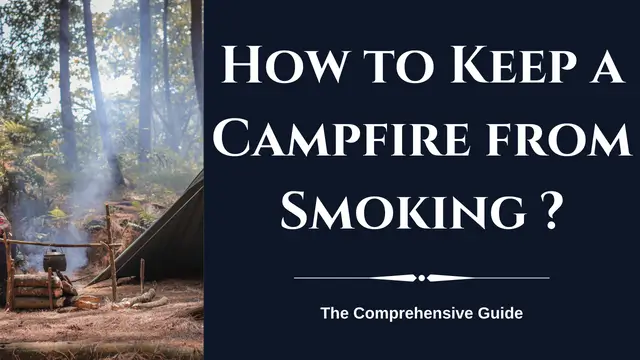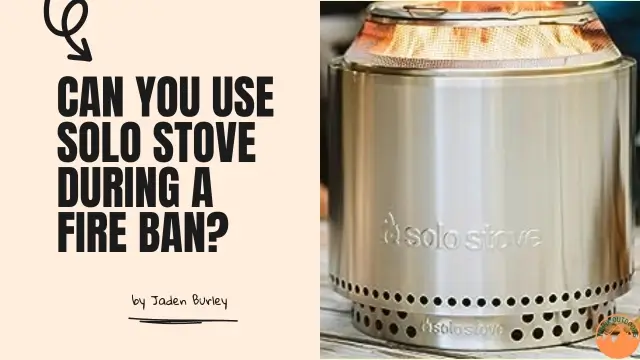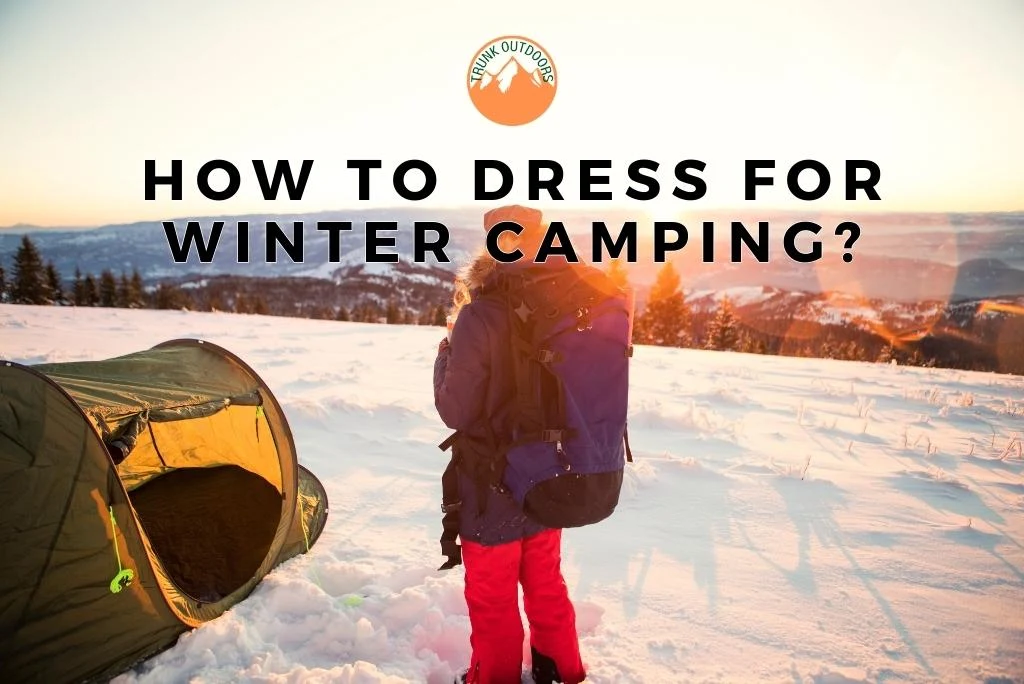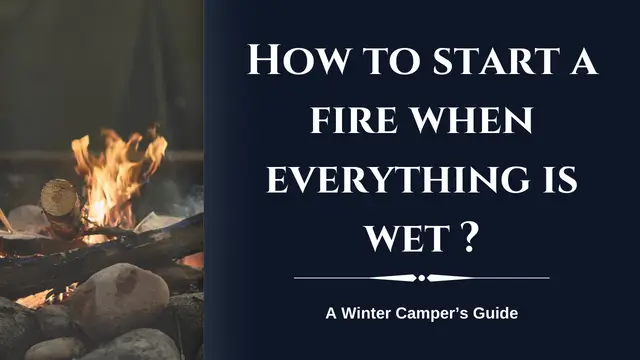How to Keep a Campfire from Smoking

Are you tired of your campfire smoking? Do you wish there was a way to reduce the smoke and make your campfire more enjoyable for everyone? If so, you’re in the right place.
I’m Jaden, a seasoned camper with a wealth of experience in the great outdoors. Today, we’re going to tackle a common challenge: how to keep a campfire from smoking. Just like selecting the right wood is crucial for a successful fire, understanding how to minimize smoke is equally important.
Whether you’re a camping novice or a seasoned pro, this guide is tailor-made for you. Let’s dive in and learn everything you need to know about how to make a smokeless campfire.
why is it important to Keep a Campfire from Smoking?
Smoke is a mixture of gases and water vapor that are released when wood burns. Also, it contains a variety of chemicals, including some that are harmful to human health like includes carbon monoxide, carbon dioxide, nitrogen oxide, irritant volatile organic compounds, air toxics.
Smoke can irritate the eyes, nose, and throat. It can also cause coughing, wheezing, and difficulty breathing. In some cases, smoke exposure can lead to more serious health problems, such as asthma, heart disease, and cancer.
In addition to its health risks, smoke can also be a nuisance. It can ruin your clothes and make it difficult to enjoy the outdoors.
How to Keep a Campfire from Smoking
Outdoor gatherings around a campfire can be the highlight of an adventurous trip, but a smoky fire can turn the occasion into a teary, coughing fit.
Here are some practical steps to reduce annoying smoke from your campfire and enhance your outdoor experience.
1. Use Seasoned Wood
Choosing the right type of wood is crucial for a less smoky fire. Opt for seasoned wood that’s well-dried and free of excess moisture. This significantly reduces the amount of smoke produced when the water content in the wood vaporizes.
- Burn only dry, seasoned wood, preferably kiln-dried.
- Avoid green, freshly cut wood, which contains more moisture and produces more smoke.
2. Construct Your Fire Properly
How you build your fire matters. A well-structured fire allows for optimal airflow, ensuring complete combustion, and hence minimizing smoke.
- Arrange firewood to encourage greater airflow.
- Build a teepee-like shape with kindling at the bottom, arranging firewood in a square shape (Lincoln log style).
3. Maintain a Clean Fire Pit
Regularly clean out ash and debris from your fire pit. A clean pit promotes better burning conditions by improving airflow, and reducing smoke.
- Don’t burn debris such as leaves, grass clippings, or pine straw.
- Stick to locally sourced, good quality firewood.
4. Choose the Right Types of Wood
Some types of wood are less smokey than others. For example, hardwoods often produce less smoke than softwoods or green wood.
- Opt for denser wood like Oak, which burns hotter.
- Consider using wood like Birch, which tends to burn fast and produces a moderate amount of heat.
5. Ensure Good Airflow
Proper ventilation around the fire aids combustion and reduces smoke output. Consider the location and shape of your fire pit for better airflow.
- Modify the fire pit shape if possible for better airflow (e.g., a horseshoe shape).
- Build your fire in a location with predictable wind or create a windbreak.
6. Use a Chimney Starter
Using a chimney starter to ignite your fire encourages a quick and clean burn, minimizing smoke in the process.
7. Invest in a Smokeless Fire Pit
If you’re a regular camper,consider investing in a smokeless fire pit. These are designed with special technologies to optimize combustion, thereby decreasing smoke production.
8. Regulate Wood Quantity
Resist the temptation to overload your fire pit. While it may seem like more wood would generate a warmer fire, burning excess wood leads to inefficient combustion and increased smoke.
- Build a small, well-insulated fire to minimize heat loss.
- Only use as much firewood as you need.
9. Know When and How to Adjust
Understanding the nature of outdoor fires and learning a few tricks can significantly help control and redirect smoke.
- Be aware that standing near the fire creates a void of heat behind you, attracting smoke. Consider creating a larger heat void such as a reflecting wall on the far side of your fire.
- Try fun tricks, like making big pointing gestures to disrupt the airflow and send smoke in a different direction.
Read more: Why Does Campfire Smoke Follow You?
10. Adapt and Experiment
Don’t be afraid to try new methods and adapt according to the specific conditions of your campsite. Bring multiple chairs to switch positions and experiment with sitting upwind instead of downwind to reduce smoke exposure.
Remember, while it is not possible to completely eliminate smoke, these tips and techniques can help keep it to a manageable level, making your campfire experience far more enjoyable.
Why is Your campfire all smoke?
Ever wondered why your campfire is more smoke than flames? There are several factors at play when your campfire fails to burn efficiently and instead produces clouds of smoke.
Understanding these causes can help you enjoy your campfire experience more by burning cleaner and more efficient fires. Here’s a rundown:
Wet Wood
A primary reason for smoky fires is the use of wet wood. When heated, the moisture in the wood turns to steam which then combines with the smoke, making it appear thicker.
Make sure you’re using dense, dry firewood, ideally with a moisture content of less than 10%.
Mold or Fungus
Wood that has been left outside for an extended period or seasoned firewood can develop molds or fungus.
Burning such wood releases these contaminants into the air, resulting in excessive smoke. Your best bet? Opt for kiln-dried firewood to eliminate the risk of mold and fungus.
Burning Yard Debris
Items such as leaves, pinecones or pine straw might seem to be convenient fire starters, but they’re also known to produce a significant amount of smoke and ash. Instead, use all-natural fire starters and quality kindling for a cleaner burn.
Poorly Arranged Firewood
How you stack your logs also impacts the amount of smoke produced. If your logs are packed tightly, it reduces the oxygen supply causing the wood to smolder and generate more smoke.
Properly arranged logs promote oxygen flow, resulting in a cleaner and more efficient combustion process.
Burning Trash
It’s never a good idea to burn trash in your campfire. Not only can it increase the smoke, but it can also emit harmful fumes. Keep your fire clean, for a better campfire experience.
Burning Softwoods Like Pine
Certain types of wood, such as pine and other softwoods, contain resin that when burned, contributes to dark smoke.
Moreover, softwoods tend to burn quickly, which can affect the quality of your fire. Hardwoods like cherry, oak or hickory, on the other hand, are known to produce cleaner, long-lasting burns.
The secret to a smoke-free campfire is using high-grade, dry firewood. Always opt for a reputable supplier, like Cutting Edge Firewood, that provides consistently dry, dense, and clean wood for a superior burning experience.
Conclusion
Smoke from campfires isn’t just a nuisance; it poses health risks and disrupts outdoor comfort due to harmful chemicals.
By knowing the causes and following the tips provided in this guide, you’ll be reduce smoke from your campfire while it’s impossible to stop completely smoke.
Ready for a smokeless campfire experience? Embrace these practical steps for a cleaner, more enjoyable outdoor adventure. Bid farewell to bothersome smoke and welcome the cozy warmth of a well-tended fire. Your next camping escapade awaits – make it a breath of fresh air! Happy camping! Jaden Burley






